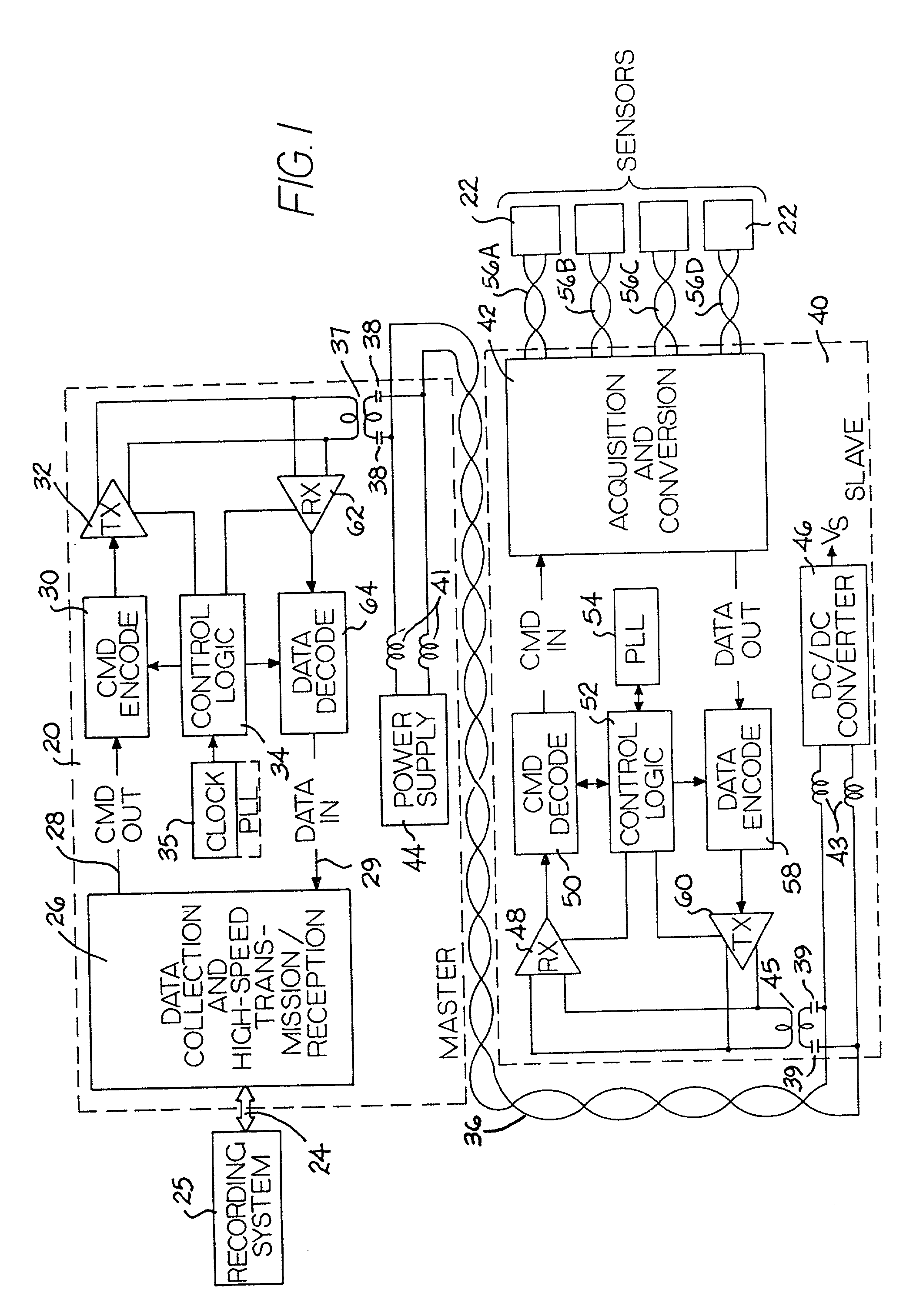Two-conductor bidirectional digital seismic telemetry interface
a technology of seismic telemetry and two conductors, applied in the field of seismic prospecting, can solve the problems of increasing the chances of incorrect or unreliable connections, and achieve the effect of reducing dc dri
- Summary
- Abstract
- Description
- Claims
- Application Information
AI Technical Summary
Benefits of technology
Problems solved by technology
Method used
Image
Examples
Embodiment Construction
[0018] A specific example of the two-conductor telemetry interface embodying features of the invention is shown in the schematic block diagram of FIG. 1. A master electronics module 20 includes data collection circuitry for collecting data from a number of remote sensors 22, which may be geophones, hydrophones, or other seismic-sensitive devices used in seismic prospecting--land or marine. The seismic data from the sensors are collected and transmitted over a high-speed data link 24, such as a fiber-optic cable, to a central recording system 25. The central recording system includes a main controller configuring the seismic data collection system and issuing supervisory commands to the master module over the high-speed link. Conventional electronic circuits and / or firmware are used to implement the data collection and high-speed interface indicated by block 26. The block 26 preferably includes digital logic to format an outbound command on CMD OUT line 28 and other digital logic to ...
PUM
 Login to View More
Login to View More Abstract
Description
Claims
Application Information
 Login to View More
Login to View More - R&D
- Intellectual Property
- Life Sciences
- Materials
- Tech Scout
- Unparalleled Data Quality
- Higher Quality Content
- 60% Fewer Hallucinations
Browse by: Latest US Patents, China's latest patents, Technical Efficacy Thesaurus, Application Domain, Technology Topic, Popular Technical Reports.
© 2025 PatSnap. All rights reserved.Legal|Privacy policy|Modern Slavery Act Transparency Statement|Sitemap|About US| Contact US: help@patsnap.com



